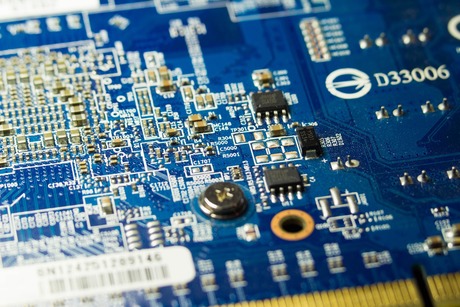Ultralow power transistors scavenge energy from their environment

Engineers at the University of Cambridge have created a new design for transistors that operate on scavenged energy from their environment.
The design has been published in the journal Science and could form the basis for devices which function for months or years without a battery, making them suitable for use in wearable or implantable electronics.
Using a similar principle to a computer in sleep mode, the new transistor harnesses a tiny leakage of electrical current, known as a near-off-state current, for its operations. This leak, like water dripping from a faulty tap, is a characteristic of all transistors, but this is the first time that it has been effectively captured and used functionally.
The transistors are based on a geometry which uses a ‘non-desirable’ characteristic, namely the point of contact between the metal and semiconducting components of a transistor — a so-called ‘Schottky barrier’. Their design gets around one of the main issues preventing the development of ultralow power transistors — namely, the ability to produce them at very small sizes.
As transistors get smaller, their two electrodes start to influence the behaviour of one another and the voltages spread, meaning that below a certain size, transistors fail to function as desired. By changing the design of the transistors, the researchers were able to use the Schottky barriers to keep the electrodes independent from one another, so that the transistors can be scaled down to very small geometries.
“We’re challenging conventional perception of how a transistor should be,” said Professor Arokia Nathan, the paper’s co-author. “We’ve found that these Schottky barriers, which most engineers try to avoid, actually have the ideal characteristics for the type of ultralow power applications we’re looking at, such as wearable or implantable electronics for health monitoring.”
The transistors can be produced at low temperatures and can be printed on almost any material, from glass and plastic to polyester and paper. The design also achieves a very high level of gain, or signal amplification.
The transistor’s operating voltage is less than a volt, with power consumption below a billionth of a watt. This ultralow power consumption makes them most suitable for applications where function is more important than speed, which is the essence of the Internet of Things.
“If we were to draw energy from a typical AA battery based on this design, it would last for a billion years,” said Dr Sungsik Lee, the paper’s first author. “Using the Schottky barrier allows us to keep the electrodes from interfering with each other in order to amplify the amplitude of the signal even at the state where the transistor is almost switched off.”
“This is an ingenious transistor concept,” said Professor Gehan Amaratunga, head of the Electronics, Power and Energy Conversion Group at Cambridge’s Engineering Department. “This type of ultralow power operation is a prerequisite for many of the new ubiquitous electronics applications, where what matters is function — in essence ‘intelligence’ — without the demand for speed.
“In such applications, the possibility of having totally autonomous electronics now becomes a possibility. The system can rely on harvesting background energy from the environment for very long-term operation, which is akin to organisms such as bacteria in biology.”
Spinning, twisted light could power next-generation electronics
Researchers have created an organic semiconductor that forces electrons to move in a spiral...
Improving the way flash memory is made
Researchers are developing the ideal manufacturing process for a type of digital memory known as...
Optical memory unit boosts processing speed
Researchers have developed a fast, versatile volatile photonic memory that could enhance AI,...





